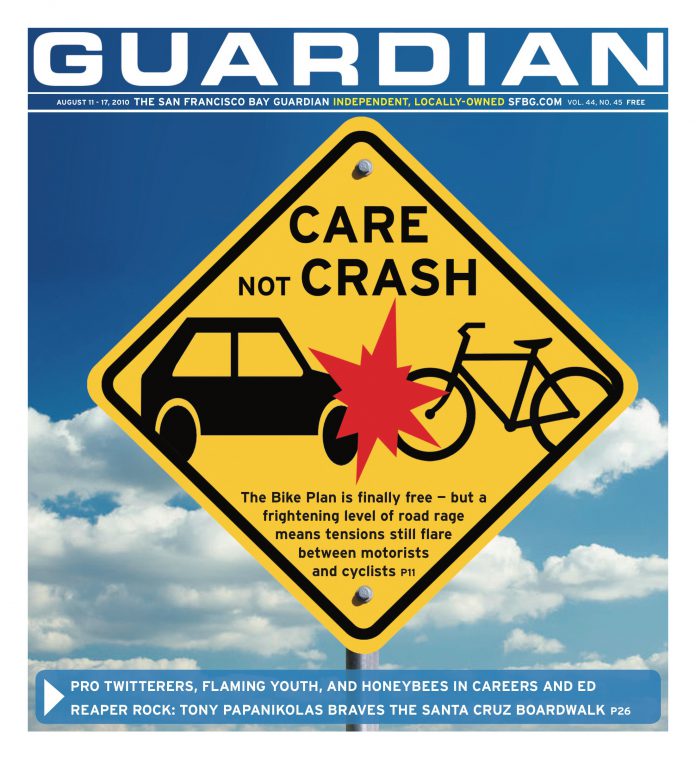arts@sfbg.com
DANCE Dance is inherently sexy. The millions of devoted fans obsessed with shows like So You Think You Can Dance and Dancing with the Stars certainly think so. But why, when so many people love watching dance, does the general public still place modern dance on an out-of-reach pedestal? Maybe the overly general words “modern dance” scare people away. Whatever the aversion, the question still remains: why is it so difficult to get people to go see something they’ll ultimately love?
ODC’s fourth annual “Summer Sampler,” held July 30-31, proved that ODC/Dance artistic directors and choreographers Brenda Way and KT Nelson not only know how to get people to see dance, they know how to create works that keep people coming back for more. “Summer Sampler” offered pre-performance wine and snacks, an early enough showtime (6:30 p.m.) to allow a Friday and Saturday night out, and most important, an hour of breathtaking dance.
The show opened with the epitome of dance-y dance, Nelson’s Stomp a Waltz (2006). Continually in motion, the dancers ran across the stage, threw each other into the air, and incorporated their entire bodies in fast-paced, rhythmically complex gestures. The ODC dancers possess great athleticism. and Friday night was no exception. Eating up the space around them, they took Nelson’s already daring choreography to the edge. I’ve seen these dancers command the large stage at Yerba Buena’s Novellus Theater, but watching them perform in the ODC Dance Commons — a space so intimate I could hear their breath and see their sweat — was an entirely new and exciting experience.
While Nelson’s very technical Stomp a Waltz was visually exhilarating, there was more to the piece than pretty tricks and leaps. A sense of raw emotion underlies Nelson’s abstract choreography. With the eye of an architect and spirit of a musician, she layered movement phrases that paired perfectly with Marcelo Zarvo’s rhythmically driving, highly emotional music.
Following Nelson’s piece, Way’s newest work Waving Not Drowning: (A Guide to Elegance) demonstrated that dance can be as tongue-in-check and cerebral as it is aesthetic. Inspired by Genevieve Antoine Dariaux’s 1963 A Guide to Elegance, the piece used playful humor and inventive movement to articulate the absurdity of gender norms. A commissioned score by Pamela Z looped text from Dariaux’s original guide, snippets of fashion advice, and a list of “important” feminine concerns like “adaptability, age, weddings, and Xmas” to confront everything from femininity and grace to sex and submission. The dancers — moving through doll-like movements, a sexy hip-swaying waltz, sexually-charged duets, and silly facial expressions — owned Way’s playful yet profound choreography with sassy elegance and bold maturity.
Though ODC is known as one of the nation’s top contemporary dance companies, it hasn’t lost sight of the importance of a local dance community. As a state of the art dance facility — housing a dance company, a pre-professional training school, recreational dance classes, a dancers’ clinic open to the public, and a performance space upstairs — the ODC Dance Commons is making dance accessible for Bay Area residents and visitors. A new ODC Theater is set to open at the end of September, making ODC’s 36,000-square-foot, two building campus the largest, most comprehensive dance facility on the West Coast.

